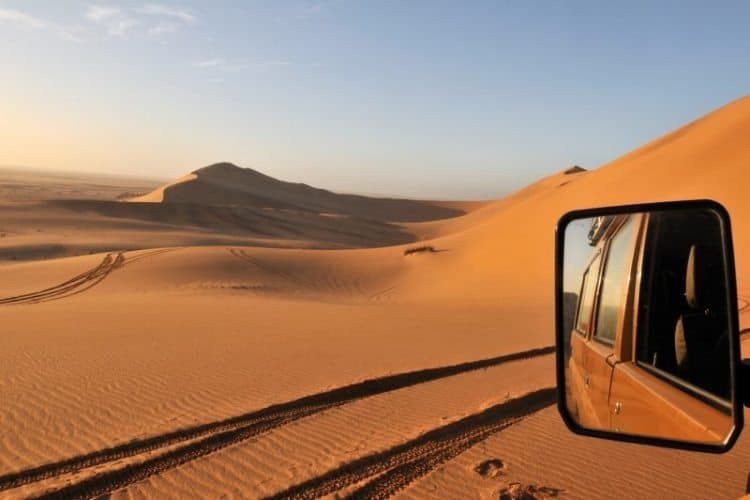
© Richard Manin / Anzenberger
In a Desert Land: Namibia
By Jono David
I knew there was something special about this vast desert land when the immigration officer at the windswept Noordoewer border crossing asked me for a pen. “Sorry, I don’t have one,” I said with surrendering hands, looking to another tourist for help.
“Well,” replied the civil servant, “If I don’t take your details, I can’t let you into the country.”
His ivory smile gave his joke away. But it’s true; he was penless, and in retrospect, his unanticipated banter was as unpredictable as is his serendipitous nation.
Namibia is a vast and mostly desolate region in the southwestern corner of the African continent. Interminable hues, rock formations, wildland contours, and a haunting emptiness amble across 1,500 kilometers between South Africa to the south and Angola to the north and some two-thirds that distance from Botswana to the east and the forbidding Atlantic Coast to the west. Remarkably, only 1.7 million people call this place home.
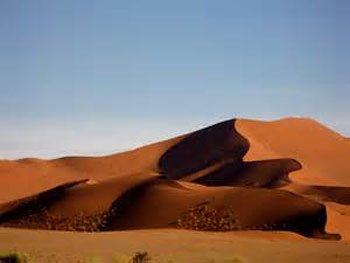
Namibia’s faces weave an equally terrific tapestry, threaded by a dozen cultural groupings, including the Wambo, who comprise nearly half the population; the Herero, historically a nomadic pastoralist people; and the San, known in the not-too-complimentary past as Bushmen, hunter-gatherers by tradition. There are also a number of Namibians of European descent reflecting the land’s occupation by Germany and South Africa before independence in 1990.
Namibia’s major attractions are neatly arranged on a more or less north-south line, or, as in my case, the reverse. My journey started on the serpentine bends of the Orange River. With the edge of South Africa standing tall to the left and Namibia ducking low to the right, 17 kilometers of canoeing showed me why Namibia has become such an allure for travelers: this place is inspiringly beautiful and full of promise.
The next day, I headed north along a stretch of meticulously manicured gravel road to the Fish River Canyon, said to be second in size to only America’s Grand Canyon. Daring myself to the rim of the 500-meter deep chasm, it seemed all 161 kilometers of the gorge’s length was visible.
From the heights, I imagined taking wing and swooping down on the murky green thread below, stretches of which were cut by a waterless winter. But as the sunset an orange-red, its liquid glow flooded the thirsty channel.
When the next day I looked out upon the golden plains of Excelsior Camp, a private farm a few hours’ drive away, I again took an imaginary flight, soaring in the thermals with various birds of prey high above the oddly placed piles of stones which dotted the otherwise level grasslands.
It was out here on the edge of the Namib Desert that I caught my first ochre glimpse of the desert sands which create stunning contrasts of color and topography. With the desert clouding in the vehicle’s wake, I rocketed further into the heart of Namibia.
Long drives here are rewarded with visions of unrivaled colors and shapes in the earth that truly resemble something out of this world. And in Namibia, the sandy planet of Sossusvlei is arguably the nation’s most beautiful heavenly body.
![]() Sossusvlei is a magnificent sweep of ochre sand dunes towering as high as 305 meters above the parched land for fully 300 kilometers one way and 150 kilometers the other. These are the tallest, and oldest dunes in the world, even more so than those in the Sahara to the north or the great Arabian Desert to the east.
Sossusvlei is a magnificent sweep of ochre sand dunes towering as high as 305 meters above the parched land for fully 300 kilometers one way and 150 kilometers the other. These are the tallest, and oldest dunes in the world, even more so than those in the Sahara to the north or the great Arabian Desert to the east.
Surprisingly, these razor-sharp mountains of sand are full of life and creature tracks, such as those of sidewinder adder snakes, dune lizards, ants, and beetles. But hardy animals such as birds, the blind golden mole, gemsbok antelope, and ostrich also thrive here, seemingly self-sentenced to a life of arid encumbrance.
But the real-life of the desert seems to be in the throngs of local sand boarders (and travelers, alike) that flock to the dunes for the latest adrenaline-rush — rocketing down a slippery slope on a piece of wood. It isn’t the Alps, but it’s just as much fun.
Later, I orbited a crack in the Namib-Naukluft Park aptly named the Lunar Landscape. Peering into its moon-like crevices from an elevated plateau, the extraordinary vista drifted weightlessly before an admiring crowd who appeared as diminutive as the beetles on Sossusvlei’sgritty slopes.
Unearthly, yes. And timeless. Out here, the rhythmical caws of roosting birds at dawn are the closest thing to a timepiece. They woke me at my Sesriam campsite on the edge of the dunes to a flawless morning beneath a cobalt dome.
Morning ablutions and meal completed, the journey continued through expanses of wide and diverse lands that seemed to change expression with every hill and dale. Rock formations beyond number and type made me wish I had taken geology more seriously as a kid; if there ever was a geologist’s heaven, this was certainly it.
But I was also traveling through a meteorological timewarp. By the time I pulled into the seaside town of Swakopmund, a day that began under crystal blue and the flutter of daybreak’s soft canary-yellow had turned cloudy, full of mist, and positively cold.
How odd it was to trade the barren sun-baked sandscapes for palm tree-lined streets and all the mod-cons along their cozy lengths. It took but a moment to understand why this town of 25,000 souls plays host to hoards of holiday-goers from across the region, and increasingly from around the world.
Not only does a relaxed atmosphere pervade in open-to-the-street cafes and along the seaside promenade, but the town is also situated more or less in the middle of the nation’s rugged coastline, making it an ideal base from which to probe nearby attractions. Not to mention a good stop in which to recoup with a comfy bed, a hot bath, a restaurant meal, and email after a few days in the desert.
Swakopmund is not only where the sea meets land or town meets desert, it’s also where cultures mix and political views at times clash. “I’ve done more for Namibia than most ‘real’ Namibians,” declared a German emigre, as I paid for my Herero doll.
Two days of modernity actually had me craving wilderness. On the road again, I entered the National West Coast Recreational Area, a 200-kilometer long strip of rugged coastline, stopping at Cape Cross, the landing site of Portuguese navigator Diego Cao in 1486 and which is also home to a massive breeding colony of Cape Fur Seals.
I pressed on into a place of legends: The Skeleton Coast. With such a ghostly name, my imagination was spooked even years before I made it here. This 600-kilometer wedge is one of the world’s most notorious shorelines, taking its name from the remains of dozens of ships run aground and the bones of their crews who stood no chance of survival ashore the desert wilderness. But the Skeleton Coast is, like Sossusvlei, full of life, exhibiting a remarkable range of flora and fauna radically adapted to the unmerciful habitat.
Some five millennia ago, the aboriginal peoples were apparently equally nonplussed by the area’s beasts because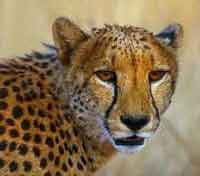 they had the enterprise to make rock art of what they saw and hunted. Twyfelfontein, meaning “Doubtful Spring,” hosts one of Africa’s most extensive collections of petroglyphs and draws archaeologists and curious travelers to this otherwise remote corner of the country.
they had the enterprise to make rock art of what they saw and hunted. Twyfelfontein, meaning “Doubtful Spring,” hosts one of Africa’s most extensive collections of petroglyphs and draws archaeologists and curious travelers to this otherwise remote corner of the country.
By the time I reached Etosha National Park later that day, I was full of one of travel’s greatest attributes: anticipation. And when the moment of that first safari sighting arrived, its magic enveloped me. Everywhere, animals!
I had just passed Andersson Gate into one of Southern Africa’s most celebrated hunting grounds, but I was only here to shoot photographs. The initial sighting of zebra, ostrich, wildebeest, and springbok vying for a drink at a sunken out-of-view water hole compacted all the anticipation into a tight and tidy memory ball. In that second, I had realized the romantic dream and accomplished the long-held objective of watching African animals in the wild. I had been on safari.
But the wilds of Etosha tamed my expectations, too: animals are the true lords of these lands. Where once they ruled a free-roaming stage across the whole Southern African region, the kaleidoscope of wildlife survives today largely, but by no means wholly, within the protected spaces of game parks and nature reserves. Sadly, fences lasso the only hopes of survival for many of these animals.
Reluctantly, I had to leave the animal kingdom and the desert-scapes behind, driving via the modern capital city of Windhoek and, from there, the Buitepos border crossing to Botswana. This time, I had a pen with me.
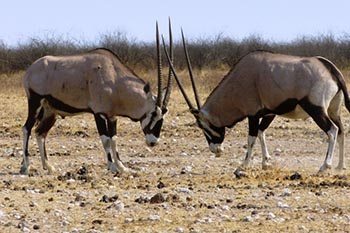 An immigration officer summoned me with her nod, authoritatively whacked an exit
An immigration officer summoned me with her nod, authoritatively whacked an exit
stamp into my passport, and remarked, “Thank you for visiting Namibia.”
I smiled back. “Thanks for having me.” Then, offering my pen, I said, “Please take it. So you can let the next traveler in.”
GETTING THERE AND AROUND
Namibia is well served by several airlines with good connections to and around Southern Africa with either direct or connecting flights to or near all capital cities. The national carrier is Air Namibia. The major airport is Windhoek with smaller ones at most major towns. Overland border crossings from one neighboring country to another are straightforward enough, though one ought to be prepared for potentially slow moving queues. Most border posts have limited hours of operation, though all are open daily.
WHEN TO GO
Remember, the seasons run opposite to those in the Northern Hemisphere. Generally, the winter months of May through September will bring the most favorable conditions, dry and cool, whilst other months are generally wetter, warmer, and more humid. The dry winter season brings more tourists. Flora and fauna vary dramatically with the seasons, so plan accordingly.
MONEY AND COMMUNICATIONS
Acquiring Namibian Dollars before arrival is unnecessary, if not impossible. US$1=N$7 (approx., October 2000). Most major world currencies are easily exchangeable in banks and bureau de changes once in the country. Throughout much of the region, the South African Rand is accepted, though change will usually be given in the local currency.
With exception to the South African Rand, it can be nearly impossible to exchange the local currency back once outside the country. Therefore, do not buy more money than you need. US Dollar American Express Travelers’ Checks are the most widely accepted TCs. Visa credit cards are fairly well accepted in cities and major towns only. In general, it is a good idea to carry a combination of monies.
COUNTRY TELEPHONE CODE: Namibia: +264.
LODGINGS
Accommodations throughout the region run the gamut from basic campsites to luxurious lodges and hotels.
For all game park and reserve accommodations, contact:
- Namibian Wildlife Resorts, Ltd.
Head Office, Private Bag 13378
Windhoek, Namibia
Tel: 61-256-446 thru 8, fax: 61-256-715
WINDHOEK
- Hotel Safari and Safari Court
P. O. Box 3900
Tel: 61-240-240, fax: 61-235-652
Singles/doubles from N$450/290 and N$550/440, respectively
- Hotel Pension Handke
P. O. Box 20881,
Tel: 61-234-904, fax: 61-225-660
pensionhandke@iafrica.com.na
Singles/doubles from N$200/280
- Hotel Heinitzburg
Heinitzburg Street 22,
Tel: 61-249-597, fax: 61-249-598
Singles/doubles from N$580/990.
SWAKOPMUND
- Hansa Hotel
3 Roon Street
Tel: 64-400-311, fax: 64-402-732
hansa@iafrica.com.na.
Singles/doubles from N$450/595
- Sam’s Giardino Hotel
89 Lazarett Street
Tel: 64-403-210, fax: 64-403-500
samsart@iafrica.com.na
giardino.com.na.
Singles/doubles from N$370/440
- Strand Hotel
P. O. Box 20
Tel: 54-400-315, fax: 64-404-942
strandhotel@namibnet.com
Singles/doubles from N$390/520
ACTIVITIES AND TOURS
Whilst individual travel is a great way to go, it will likely require extensive planning and bookings from six to twelve months in advance. Just turning up in the country, renting a vehicle, and setting out will likely end in great frustration, or worse. Organized tours, whether arranged with a local tour operator or guide or a tour operator from your own country, generally offer good value for money and relieve the burden of accommodation bookings as they are pre-arranged by each company, as well as lightening the load of other travel logistics.
- TYPES OF SAFARI TOURS
The word safari means more than game drives. It encompasses virtually any adventure outing. Generally, a safari takes one of the following three forms, and varies in length from a few days to several months:
Mobile
One or two night stays in temporary or permanent camps with basic facilities, traveling in 12-25 seat buses, catering mainly to budget travelers
Permanent
Stays in permanently tented sites or lodges, a base from which to explore the surrounding area by day, aimed at those with a need for daily creature comforts.
- Wildland Adventures
3516 NE 155th St.
Seattle, WA 98155 United States
Phone: 800-345-4453 or 206-365-0686
Fax: 206-363-6615
info@wildland.com
wildland.com
Offers unique, small group and custom safaris in Namibia.
For all your Namibian desert sandboarding needs, contact:
- Swakopmund Adventure Centre
Roon Strasse
Swakopmund, Namibia.
Tel: +264-64-406-096
fax: +264-64-405-038
email: swakopadventure@yahoo.com
Also organizes quadbiking, skydiving, fishing, ballooning, horseriding, kayaking, micro lighting day tours, dolphin cruises, pleasure flights, camping safaris, and more.
- Felix Unite (head office)
141 Lansdowne Road, Claremont 7700
Cape Town, South Africa
Tel: +27-21-683-6433, fax: +27-21-683-6486,
tours@felix.co.za
felixunite.co.za
Orange River canoe trips
- Namibia Tourism (various locations)
Private Bag 13346
Windhoek, Namibia
Tel: 61-284-2366, fax: 61-284-2364
Also provides listings of local safari tour operators and guides
- Tour and Safari Association of Namibia
P. O. Box 11534
Windhoek, Namibia
Tel: 61-238-423, fax: 61-255-422US
Kartagener Associates Inc.
12 West 37th Street
New York, NY 10018
Tel: 212-465-0619, fax: 212-868-1654
kainyc@worldnet.att.net
UK
6 Chandos Street,
London W1M 0LQ
Tel: +44-171-636-92924, fax: +44-171-636-2969
namibia@globalnet.co.uk
VISAS AND OTHER DOCUMENTS
Very generally speaking, passport holders of British Commonwealth countries plus USA and Japan will receive a 60-day or 90-day tourist visa upon arrival. Latest visa requirements ought to be checked before departure, however. Proof of onward travel will likely be needed.
RESOURCES
Namibia Tourism (various locations)
Private Bag 13346
Windhoek, Namibia
Tel: 61-284-2366, fax: 61-284-2364
info@namibiatourism.com.na
namibiatourism.com.na
Wildnet Africa
wildnetafrica.co.za/wildweb.html
Africanet
africanet.com
info@go2africa.com
- The Wild Mississippi: 2340 Miles Across Ten States - April 8, 2024
- Exploring the Floating Villages of Tonle’ Sap Lake - April 3, 2024
- Woman Traveling Solo on Turkish Buses - March 27, 2024
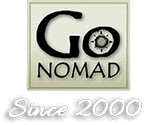

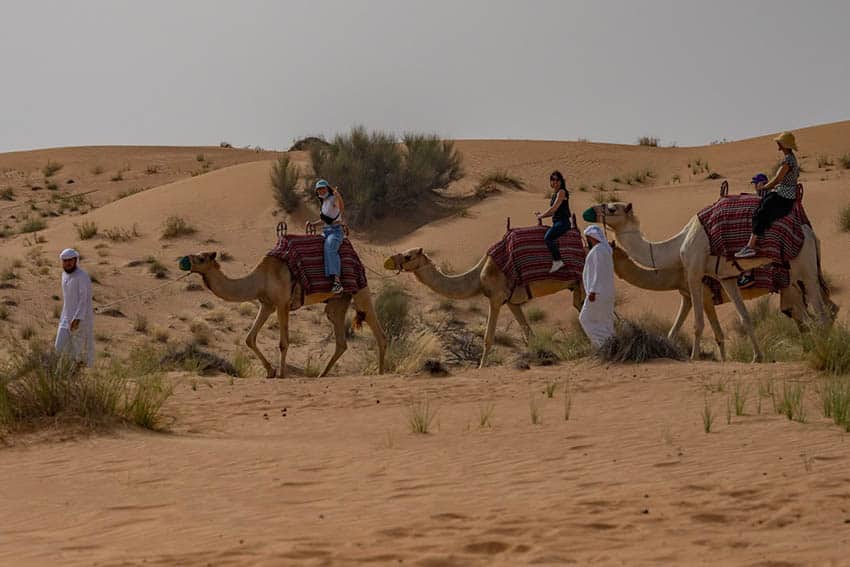


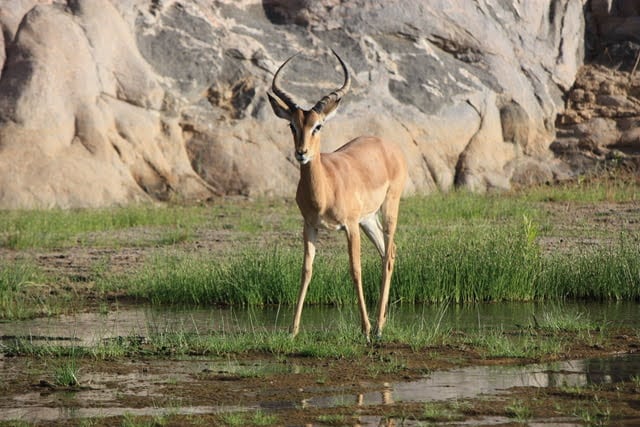
I wants to buy some vacant desert land near any river …
If you have … I wants to visit them.
Thanks